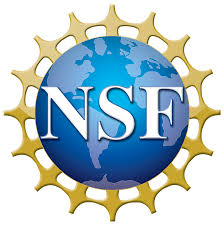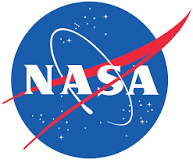EPISODE TRANSCRIPT—PART 1: HEATHER ABBOTT-LYON: So I met John fifteen years ago at a recruitment weekend for the Chemistry Department at Ohio State University. There were probably sixty to seventy students who were there, prospective students for the grad program. Throughout the morning, I kept passing John in the hallways. We were meeting with all the same faculty. Then, in the afternoon, they split us up by subdivision so that we could meet with current graduate students at Ohio State and find out what grad school there was really like.
The organic chemists, like half of them, went off in one room and then the handful of us who were interested in physical chemistry, we went off into a different room to talk to the current grad students. During the Q and A, I was really impressed. John seemed to be asking all these questions that I hadn’t even considered. He was savvier than the rest of us.
That night, all the prospective students went out to dinner and we sort of compared notes and I found out that, as it turned out, John had already visited a lot of graduate schools. He was pretty much at the end of his tour and he was leaning toward attending the University of Buffalo.
Ohio State was the first school I had visited, but I was really excited about the following weekend because I was going to the University of Virginia. My sister went there, it was close to my family, and they were offering me a pretty good fellowship so I was excited.
Over the course of the night, we were sort of initially talking about what research we had done as undergrads, what research we were hoping to do in graduate school, what our career goals were, but as the night wore on, we started talking about other stuff: our music interests, the sports teams we cheered for, our families, even religion.
John asked me a ton of questions. He listened and then he challenged me on almost everything I said. But he was respectful. He wasn’t condescending or patronizing, which is something I get a lot as a short, blonde female. He was clearly interested and he was really interesting. I remember thinking if circumstances were different, if he didn’t live in Michigan and I didn’t live in Georgia and we weren’t considering different grad programs, we would probably be friends. Maybe even best friends.
The next morning, all the prospective students were at the airport. We’re saying our goodbyes. John comes up to me and he says, “Well, I'll see you next weekend.” I looked at him quizzically. “What?”
“Yeah, so actually, I got accepted to the University of Virginia and I think I’m gonna check it out.” I was flattered but really skeptical until I saw him Charlottesville the next weekend.
I think John’s dad tells the story best. He says John called him up and he said, “Pa, so I decided I’m gonna actually go to UVA next weekend and check it out.”
John’s dad was like, “Okay. Why?”
And John said, “Well, you know I do not believe in love at first sight, but I met a girl.” That feeling was mutual.
The next couple of years in Charlottesville were amazing. Being in a relationship with another physical chemist was great. We got to see each other every day, we took classes together, we studied together. We decided to work in different research groups, but our projects were closely enough related that we could compare notes. We could talk about our progress, our frustrations in the lab. We could help each other troubleshoot.
After a couple of years, we decided to get married. We came back from our honeymoon and started writing our dissertations and looking for jobs. That’s when the other shoe fell. See, John and I are what academia refers to as a “two-body problem.” We’re in such specialized fields that finding two jobs in the same city is really challenging.
Now, if you ask John and I, we’ll tell you our research is totally different. John is a gas phase spectroscopist. That means he studies chemical reactions that happen in the air. I, on the other hand, am a surface scientist. That means I study chemical reactions that happen on solid surfaces. Now, the fact that we both study small molecules interacting with metals it’s totally different stuff.
We had a couple of possibilities. The first option was at Los Alamos National Lab. You may have actually heard of Los Alamos. It was the primary production plant for the Manhattan Project during World War II. That was the U.S.’ nuclear weapons’ program. As you might expect, this national lab has a defense mission and so it’s in a very remote location, the middle of nowhere, New Mexico.
John was being recruited by a group that was really excited about his background in both experiment and theory and they were offering him a special fellowship. There was one surface science group there that I could join. They were studying the world’s only single crystal surface of uranium.
Now, I was not particularly keen on this research project. For one thing, I was in my mid-twenties and, at some point, I was hoping to have children. Working with a radioactive surface didn’t seem like a great idea.
But the other thing is that, over the course of my interview, I was actually pulled aside by several scientists because they wanted to make sure that I understood that while the project I would be working on could be used to help remediate nuclear waste, it could also be used to help develop more effective nuclear weapons and the reality is that I wasn’t going to have control over which way my data was utilized. That was a huge ethical dilemma for me. I actually cried all the way from that job interview to the airport.
It did motivate me to look for other options and so I was super excited when I landed an interview at one of the Max Planck Research Institutes in Germany. These places are incredibly well-funded and they're world renowned for the research that comes out of them. During my interview, the faculty member that I was hoping to work for, he took me on a tour of the lab facilities. And as part of this, he leads me into this seminar room where there are headshots of more than thirty different people lining the walls.
And he says, “All these scientists have worked at our institutes and won a Nobel Prize. We call this the Nobel Room. Obviously, I was pretty excited when they offered me a position.
We managed to negotiate for John to get an interview at the same institute in a different department. Unfortunately, his experience wasn’t as positive. The group that he was going to be working with was shorthanded and they were excited to have him in the lab. But the director of the department told John he didn’t think his research experience was directly relevant. He was very blunt about it. He said, “Look. I’m going to give you a twelve-month contract because my colleague wants to hire your wife.”
So John flew back to Virginia with a bruised ego and we started debating our options.
This point in my marriage was probably the most difficult time we've ever had. We had some really angry debates. John argued that the position at Los Alamos was in the U.S. which we knew, so that was great. The salary was better and it was going to be really good for his career. I argued that if we took the positions in Germany, we could travel around Europe together. And working in a world-class research institute was going to be better for both our careers. They were going to see how good he was. Plus, I didn’t want to be expected to follow my husband.
We had some really bitter debates and in the middle of one of our fights, John turned to me and he just yelled, “You know I’m going with you to Germany!”
Until that moment, I didn’t actually know. We had been seriously debating living on separate continents and separate time zones. That moment, it changed our marriage for me.
Six months later, we arrived in Berlin with nothing but our suitcases and we met with our research advisers. That first day in Germany, we found out that we had both been awarded Alexander von Humboldt Fellowships and that we would be fully funded for the next two years to do research in Germany.
We got to travel all over Europe during that time. It was pretty isolating sometimes to be living in a country where we didn’t speak the language and we weren’t familiar with the culture. Actually, I didn’t speak the language. John had taken four years of German in high school and a couple of years in college. He taught me how to count to ten and say please and thank you, bitte and danke, before we left. Then, when we got to Germany, he spent hours with me once I started my German language classes helping me practice speaking German. He was my tandem partner.
Because it was kind of isolating to live in that country, it was actually really intimate for us. It kind of brought us closer together and it was right at the beginning of our marriage. I wouldn’t trade that time in Germany for anything. Which is why, two years later, I followed him to Atlanta when he got a tenure track position at Clayton State. I took a second postdoc at Georgia Tech and then a couple of years later I went on the job market. I had multiple offers, but one of them was a tenure track position at Kennesaw State, which seemed too good to be true.
We did it! We found a solution to the two-body problem.
In September, we celebrated our tenth wedding anniversary. Now, John and I may be the only couple that has ever debated the optimal design of a time-of-flight mass spectrometer over dinner, but I’m okay with that. I am passionate about the science that I do and I’m so thrilled that I get to share it with the man that I love. And now that we found a solution to our academic two-body problem, we’re working on another two-body problem. Three-year-old twins Max and Izzy.



